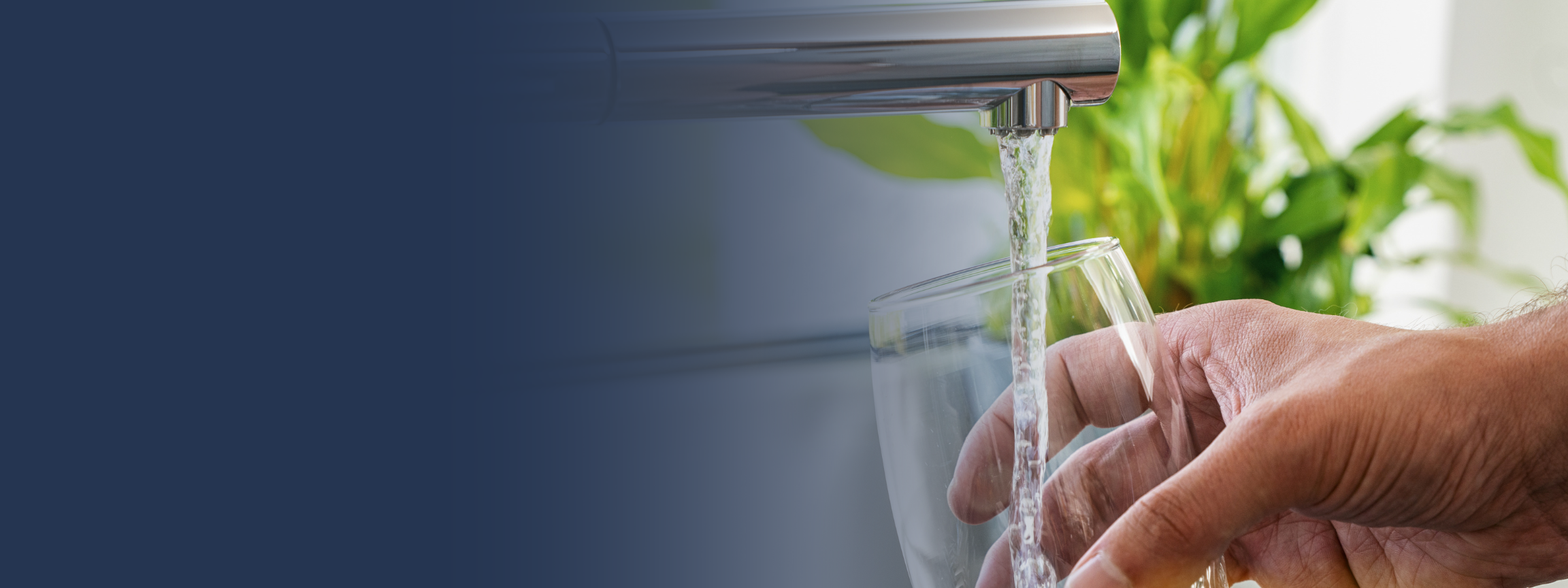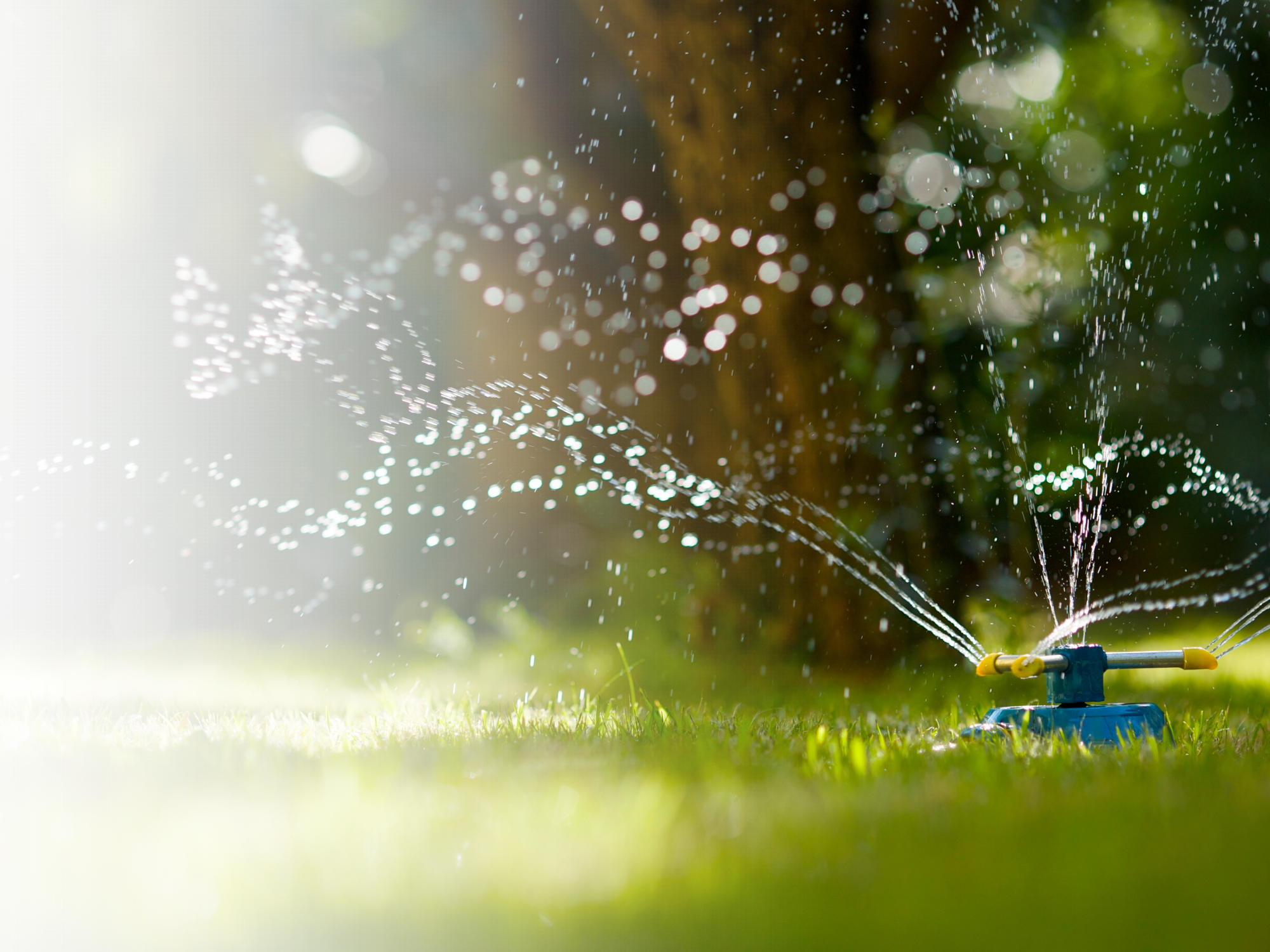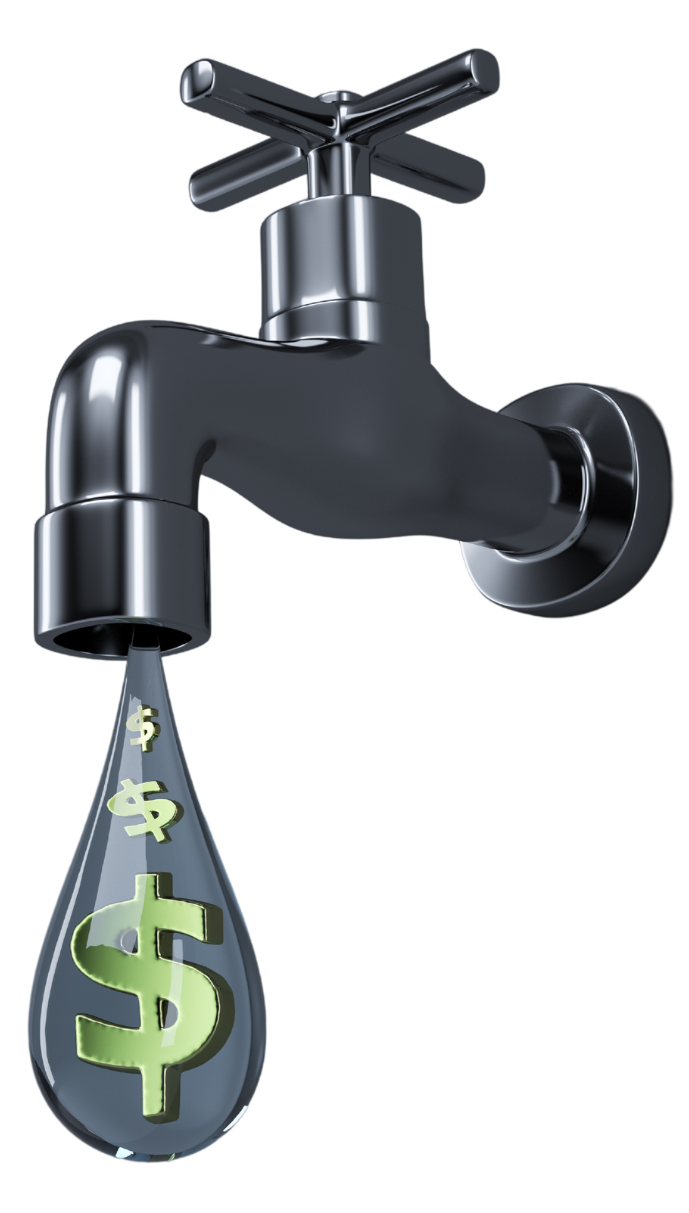PUBLIC UTILITIES
Contact Us
7384 Carriage Court
Gloucester, VA 23061
Phone: 804-693-4044
Fax: 804-693-4664
After Hours: 804-693-3890
Hours
Monday through Friday
8 a.m. to 4:30 p.m.

Services
Gloucester County Public Utilities is committed to meeting the present and future water needs of our customers by meeting and/or exceeding all federal, state and local regulations with regard to water quality. In addition, great pride is taken by the department in responding to customers’ concerns and inquiries in an efficient, polite and professional manner. The department provides water service to approximately 5,200 accounts and sewer service to approximately 1,900 accounts.
Locations
The department operates from three locations: the Business/Customer Service Office is located at 7384 Carriage Court, the Maintenance Shop is located at 6936 Main Street and the Gloucester County Water Treatment Plant, a 2MGD facility adjacent to the Beaverdam Reservoir.
Application for Water and Sewer Service
NOTE: In order to electronically fill and digitally sign the Application for Water and/or Sewer Service (PDF), please download the file using the link below, complete the form in Adobe, and return to our department via email.
To receive service, an Application for Water and/or Sewer (PDF) needs to be completed and signed at least 24 hours prior to the service start date. There is a fee of $30 to transfer the account, which may be paid at the time of sign up for service or added to the first month’s bill. In addition to the transfer fee, tenants are required to pay deposits of $60 for water service and $40 for sewer service, if available (deposits are required to be paid prior to startup of service, cash or check only). The deposit will be applied to the final bill when the service is terminated.
Please email applications to Karin Earwood at kearwood@gloucesterva.info or Amber Durham at adurham@gloucesterva.info.
Billing Procedures
Water service is billed monthly with water meters being read monthly (in whole thousands of gallons) and bills (also in whole thousands of gallons) being mailed by the 2nd working day of the following month. Sewer service is calculated by the amount of monthly water usage or drainage fixture units. (For sewer service not connected to a water meter of the County water system, billing will be based on 250 gallons per month per drainage fixture unit as defined in the Virginia Uniform Statewide Building Code.) Sewer customers will also receive a monthly bill from Hampton Roads Sanitation District (HRSD), with the bill being payable to HRSD. This sewer service is also based upon the monthly water usage.
The bill is due upon receipt. To avoid a late penalty of 10% or $5, whichever is greater, payment must be received in the Treasurer's Office by the due date, which is the last day of the month in which the bill is rendered. If a bill has not been received by the 10th of the month, please call Customer Service at 804-693-4044 so a duplicate bill can be issued.
Disconnection
If payment is not received by the due date, a Final Disconnection Notice will be issued to any customer with a past due balance. If payment is not made by the 15th of the following month, your service may be disconnected. To have your service restored, you will be required to pay your account in full (your past due amount and your current amount due), as well as a $35 disconnection charge. If service is restored after normal working hours, on weekends and/or holidays, an additional $50 charge will be due.
It shall be unlawful for any unauthorized person to open, disconnect, disturb or otherwise tamper with the water meter or any part of the water meter.
If the water service is terminated for non-payment, restoring the service yourself is considered tampering. There will be a $75 charge for this violation.
Fees for Service
To receive service, an Application for Water and/or Sewer Service (PDF) needs to be completed and signed at least 24 hours prior to the service start date. There is a fee of $30 to transfer the account, which may be paid at the time of sign up for service or added to the first month's bill. In addition to the transfer fee, tenants are required to pay deposits of $60 for water service and $40 for sewer service, if available. Deposits are required to be paid prior to start up of service. Cash or check is accepted only in the office. Credit cards are accepted online. The deposit will be applied to the final bill when the service is terminated.
Where to Send It
After you have completed the application, you may return it to us by fax at 804-693-4664, mail it to:
Gloucester County Utilities
6489 Main St.
Gloucester, VA 23061
You can also bring it to our Business/Customer Service Office located at:
7384 Carriage Court
Gloucester, VA 23061
If you have any questions, or require any additional information, please telephone Customer Service at 804-693-4044. Remember, we must receive your application for service in the office at least 24 hours prior to the service start date. In addition, any deposits will need to be paid prior to the service start date.
Water Application Fees
| Meter Size | Water Fees | Development Fees | Total |
|---|---|---|---|
| 5/8 by 3/4 | $3,500 | $500 | $4,000 |
| 3/4 | $3,750 | $750 | $4,500 |
| 1 | $4,500 | $1,000 | $5,500 |
| 1-1/2 | $6,500 | $1,500 | $8,000 |
| 2 | $10,500 | $4,000 | $14,500 |
| 3 | $17,200 | $8,000 | $25,200 |
| 4 | $25,500 | $15,000 | $40,500 |
| 6 | $40,500 | $25,000 | $65,500 |
| 8 | $75,500 | $30,000 | $105,500 |
Sewer Application Fees
| Meter Size | Water Fees | Development Fees | Total |
|---|---|---|---|
| 5/8 by 3/4 | $3,300 | $1,200 | $4,500 |
| 3/4 | $4,000 | $1,800 | $5,800 |
| 1 | $5,000 | $3,000 | $8,000 |
| 1-1/2 | $9,500 | $5,000 | $14,500 |
| 2 | $14,000 | $9,000 | $23,000 |
| 3 | $18,500 | $12,000 | $30,500 |
| 4 | $23,000 | $15,000 | $38,000 |
| 6 | $37,500 | $25,000 | $62,500 |
| 8 | $68,000 | $30,000 | $98,000 |
Hampton Roads Sanitation District (HRSD) Fees Volume Based Facility Rate Schedule
For additional information on HRSD rates and fees, including Wastewater Treatment Rate Schedules, view the HRSD FY 2024 Rate Schedules (PDF).
| Meter Size | FY 2024 Fees |
|---|---|
| 5/8 by 3/4 | $2,420 |
| 3/4 | $4,210 |
| 1 | $7,410 |
| 1-1/2 | $18,395 |
| 2 | $35,825 |
| 3 | $91,665 |
| 4 | $178,485 |
| 6 | $456,620 |
| 8 | $889,185 |
| 10 | $1,491,070 |
| 12 | $2,274,730 |
| 14 | $3,251,050 |
| 16 | $4,429,645 |

Monthly Water & Sewer Rates
Monthly Water Rates
0 to 2,000 gallons - $20.18
Next 6,000 gallons - $10.00/Thousand
Over 8,000 gallons - $10.40/Thousand
Monthly Sewer Rates
0 to 2,000 gallons - $11.17
Next 2,000 gallons - $4.92/thousand
Next 4,000 gallons - $4.68/thousand
Next 3,000 gallons - $4.38/thousand
Next 64,000 gallons - $4.18/thousand
Next 15,000 gallons - $3.82/thousand
Over 90,000 gallons - $3.27/thousand
Monthly HRSD Treatment Rates ($/1,000 gallons)
FY 2024 $10.16
FOG Program
Gloucester County Public Utilities' Fats, Oils and Grease (FOG) Program is designed to provide you with the proper tools and knowledge to prevent pipe blockages that cause backups and sanitary sewer overflows. There are a number of ways you can help reduce the amount of FOG entering the sanitary sewer system by following best management practices in the kitchen to properly dispose of fats, oils, and grease. Doing so helps the environment, our health, and our economy.
Attention Gloucester County Food Service Establishments
Beginning in July 2011, the Utilities Department will be contacting you by mail with an information packet regarding participation in the County FOG Program. If you need to request a variance, please send an email or a letter to the contact information shown below. Please include your business name, contact information and reason for the variance. Once a formal inspection of your facility has been completed, your variance request will be reviewed.
Required Food Service Establishment Employee Training
The fees associated with FOG Program are as follows, FSE Registration fee is $40.00 and FSE annual inspection fee is $25.00.
FSE employee training (PPT) or certification. Complete the FSE Employee FOG Certification Test (PDF) and email to FOG Program or fax to the FOG Program Coordinator at 804-693-4664.
General Information
Greasy foods can be unhealthy for your body, but did you know that fats, oils, and grease (FOG) are bad for your plumbing system, too? In addition to cooking oils and grease, the following substances are also considered FOG: food scraps, meat fats, lard, shortening, butter/margarine, dairy products, batters, dressings, icing, and sauces. If poured or washed down the drain, these substances cling to pipe walls and build up over time.
It's up to all of us to do our part to prevent harmful blockages, backups, and sanitary sewer overflows caused by FOG. Preventing the problem is easy if you practice these good habits in the kitchen:
Avoid using the garbage disposal - ground up food particles only contribute to pipe blockages.
Before washing, absorb small amounts of grease on pots, pans, dishes, and cooking utensils by wiping them with a paper towel - then dispose of it in the trash.
Never pour grease down the drain or into a toilet. Neither garbage disposals nor the piping in your home can handle these substances.
Once grease has cooled, pour it into an empty, heat-safe container (like a jar or can), secure a lid on it and place it in the trash.
Scrape food scraps from plates into the trash.
Use a basket or strainer in your sink to catch food scraps, then empty into the trash.
Learn More About the Program
If you still have FOG questions, send us an email at FOG Program. View a list of grease haulers (PDF) or a list of those who service any grease traps/interceptors (PDF) within the County who are permitted through Hampton Roads Sanitation District (HRSD) and certified through Hampton Roads Planning District Commission's Regional Grease Hauler Program. For dates and times of upcoming training sessions, contact Julia Hillegass with Hampton Roads Planning District Commission at 757-420-8300.
Sanitary Sewer Stoppage
If you suspect a sanitary sewer stoppage, please call the Public Utilities department at 804-693-4044. Together we can keep our pipes clean!
Resources
Water Conservation Tips
According to the American Water Works Association, a typical, single family home consumes 72.5 gallons of water per person per day. Water is generally used in the following manner:
Baths use 1.6%
Clothes washers use 20.9%
Dish washers use 1.3%
Faucets use 15.3%
Leaks-yes, leaks-account for an amazing 13.8%
Other domestic uses represent 2.1%
Showers use 17.3%
Toilets use 27.7%
Conserving Water
Why should you conserve water? Water is one of our most abundant yet precious resources, which we seldom appreciate. Why? Because it is so plentiful and easy to obtain. All we do to get water is turn on any of our spigots 24 hours a day, 7 days a week and it’s there. It appears just like magic. Now we know water just doesn’t magically appear.
After extensive treatment processes and traveling through miles of pipeline, potable water is a valuable resource that shouldn’t be wasted. Did you know that just 1% of the entire water supply on this planet is available for human use? The rest is salty or locked in glaciers or ice caps. And just 1% of that amount is actually used for drinking purposes-the rest goes to watering lawns and gardens, washing machines and down toilets and drains. And remember, you pay for every drop, whether it’s used or wasted, so water conservation is something we all should practice.
Saving Money
Do you know that when you conserve water, you also save on other services. When you use less hot water, there is less energy needed to heat that water, thereby reducing your gas or electric bill. When you use less water, you also put less water down your sewer drains, thereby reducing your sewer bill or reducing the burden on your private septic system. By implementing a simple conservation program, you are helping the environment by helping ease the burden on water storage, purification, distribution and treatment facilities.
Four Basic Steps to a Water Conservation Program
Step 1: Economize! - Look at your water habits which you have developed over a lifetime. A large amount of water goes down the drain because we have always thought of water as being plentiful and cheap. As a general rule, inside your house, the bathroom facilities make up nearly 75% of the water used. Become aware of the amount of water you use and look for ways to use less. The most important thing to do to economize: Think as you use water!
Step 2: Repair Leaks! - A small leak of just one drop per second wastes 2,400 gallons of water a year. Leaks are one of the great enemies of your water conservation program and they shouldn’t be taken lightly. And don't forget the leaky hot water faucet; you'll save both water and energy.
Step 3: Install Water Saving Devices! - There are many devices you can buy and install fairly easily to reduce your water consumption. These include faucet aerators; flow regulators for shower heads; and displacement devices for toilets to reduce water consumption. Investing a little money, time and labor can have big paybacks to reduce your water use. Installing high-efficiency faucets or faucet aerators could reduce a household's faucet water by more than 500 gallons annually, can have a payback period of as little as one year and could save between 2,850 and 8,500 gallons and as much as $50 over the lifetime of the product! In the future, you'll be able to look for WaterSense-labeled faucets and faucet accessories like aerators. WaterSense-labeled products perform as well as or better than other products in the marketplace and perform at least 20% more efficiently than their less efficient counterparts. Check EPA's website for more information.
Step 4: Reuse Water! - Unused or slightly used water is often suitable for other purposes, even with no treatment or filtration. During a severe drought, reusing water may become a necessity. When maximum conservation is called for, make the most of any water before you let it go down the drain!
Saving Water Outdoors
Did you ever realize that sometimes half or more of the water piped into homes is going right back out through hoses onto lawns and gardens. It’s a fact of life that when more water is used outside, more is wasted there. But you don’t have to let your lawn turn brown or the car get dirty to conserve water. Just use some simple common sense instead. Using the hose to wet your car beforehand.
For instance, once you set a lawn sprinkler out and turn it on, it’s easy to forget just how much water you can waste in a short period of time. A single lawn sprinkler spraying five gallons per minute uses 50% more water in just one hour than a combination of ten toilet flushes, two 5-minute showers, two dishwasher loads and a full load of clothes!
The basic principle of lawn and garden watering is not to give your lawn and plants more than they need. Don’t follow a fixed watering schedule. Water when the grass or plants show signs of needing it. Over watering is bad for plants and lawns.
Did You Know…
Leaking toilets can leak over 1,000 gallons of water every single day. Every flush uses 3-1/2 to 7 gallons of water. An unrestricted shower head runs at 5 to 10 gallons a minute. You pay for every drop, whether it's used wisely or wasted.

